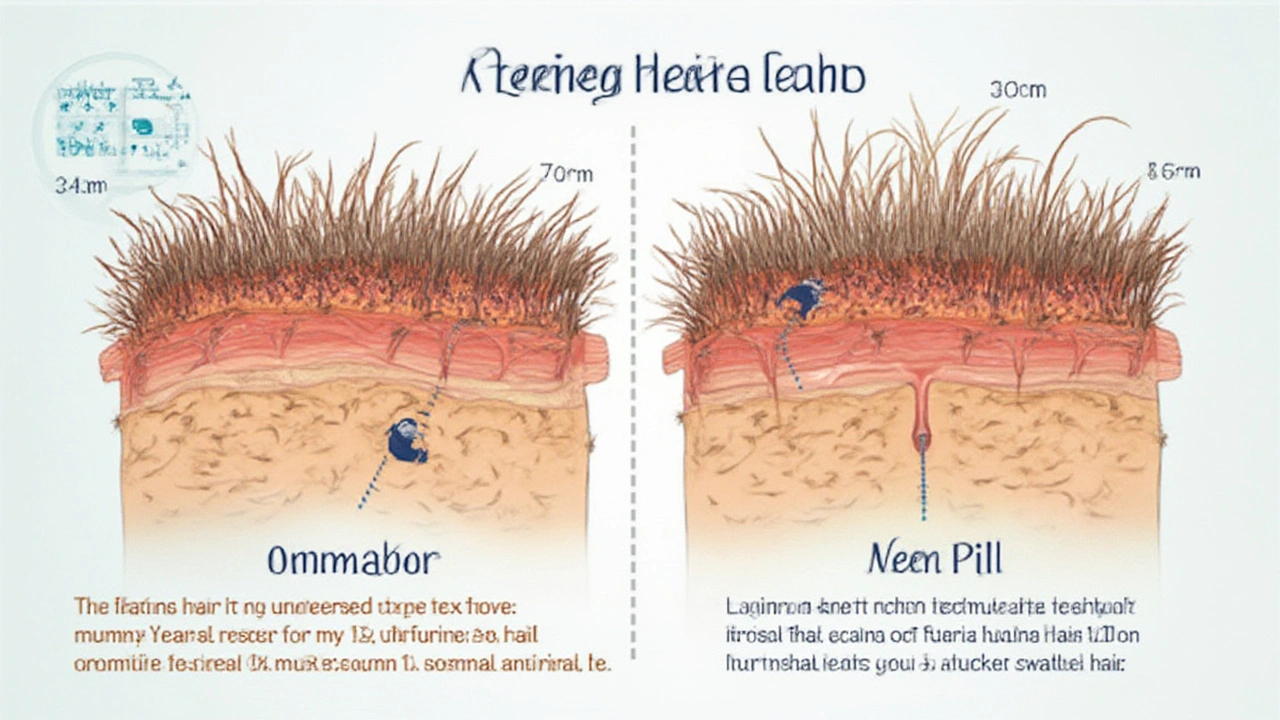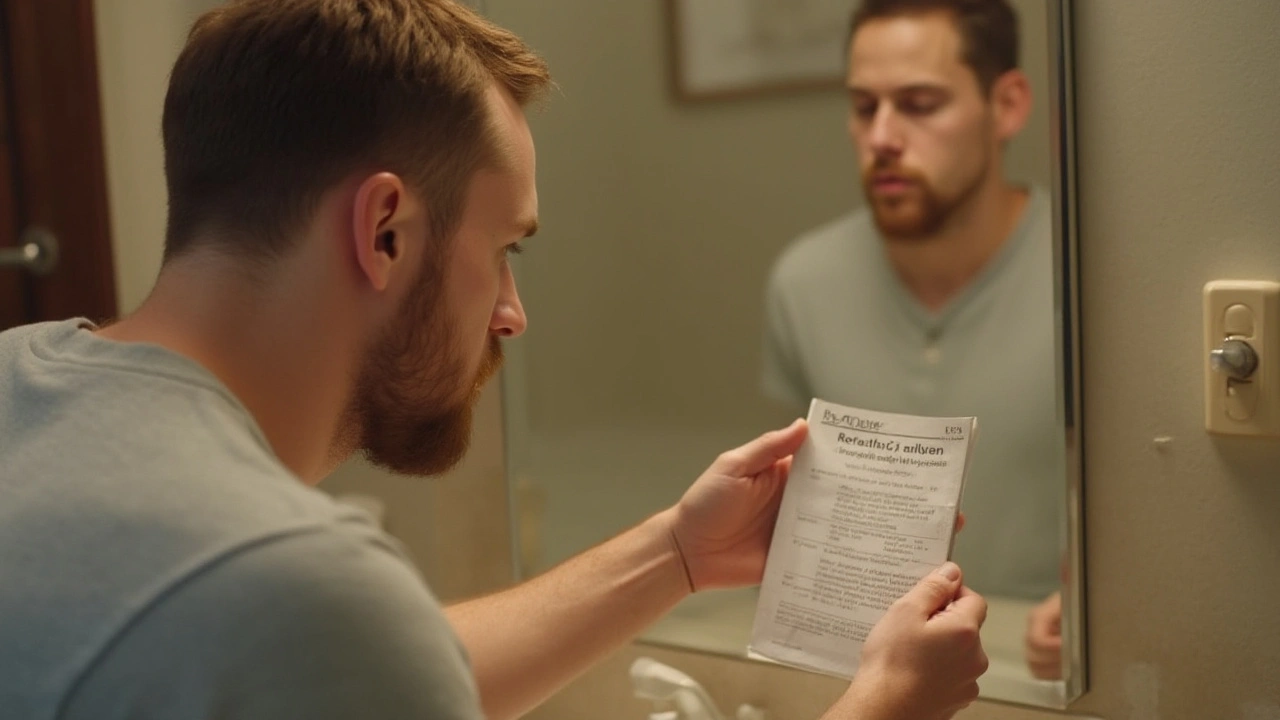Hair loss doesn’t knock politely. It just barges in—clumps in the shower, a wider part, or those cursed patches peeking through your ponytail. If you’ve ever stared at your scalp in the mirror and wondered if anything can actually help, you’re not alone. The market’s loaded with buzzy solutions, but Rogaine 2 (the lower-strength minoxidil) has this almost legendary status among women tackling thinning hair. But does it live up to the hype, and what’s really going on when you dab that foam or liquid onto your scalp?
What Rogaine 2 Is and Why It Matters
Rogaine 2 is the 2% minoxidil formula cleared specifically for women with thinning hair. You’ll find it lined up on drugstore shelves, promising regrowth and thicker locks. What’s wild is that it’s not some ancient herbal remedy—minoxidil was first used as a blood pressure tablet. Doctors started noticing their patients were sprouting more hair (in places they didn’t want), and a lightbulb went off. Could this stuff help with female-pattern hair loss? Turns out, yes. By the late 1980s, the topical format became official, with the 2% made for women to limit side effects and harness the benefit.
What sets Rogaine 2 apart from the 5% extra-strength option marketed mostly to men? Well, the gentler formula brings fewer odds of irritation and unwanted facial hair—honestly, nobody misses that side effect. For the science nerds: minoxidil works by hiking up blood flow to hair follicles and essentially extending their growth phase. When you massage it onto your scalp each day, those struggling follicles get a nudge to switch from "resting" to "active." Over months, that means finer, miniaturized hairs get thicker and sometimes you see new sprouts pop through.
Here’s where things get interesting: dermatologists and clinical trials confirm that Rogaine 2 percent really does make a difference, but patience is key. Users can see less shedding as early as 8 weeks, but it’s usually 4-6 months of steady use before you notice significant thickening. Is it a miracle cure? Not quite. The effect tapers if you stop—this isn’t a permanent fix. But when nothing else seems to work, that extra bit of fullness can do wonders for confidence.
Let’s talk numbers for a sec. In a well-regarded 2014 study with over 400 female participants, about 40% saw moderate hair regrowth after just 6 months. Only about 5% had no improvement at all. Most people end up with fuller-looking hair, less visible scalp, and a nice bump in self-esteem.
| Study | Participants | Reported Regrowth (6 months) |
|---|---|---|
| 2014 Clinical Trial (J Am Acad Dermatol) | 432 women | 40% moderate, 55% slight, 5% none |
By the way, this stuff is *FDA-approved.* You don’t need a prescription, but sticking to the routine is non-negotiable. Skip days, use it “when you remember,” and those hoped-for results likely won’t happen. If you do commit, take "before" photos—you might not believe the slow changes until you see them side-by-side.
Side note: some women panic when they see increased shedding in the first few weeks. Don’t. That’s called "shedding phase"—it’s usually just dying hairs making way for thicker, healthier ones. Dermatologists even warn you to expect it up front.
According to Dr. Maryanne Senna, dermatologist at Massachusetts General:
"It’s best to think of minoxidil as fertilizer for hair, but you have to water your scalp with it daily. Consistency is so much more important than strength for most women."

Using Rogaine 2: How It Works and Smart Tips
Now, the actual application. Rogaine 2 comes as a liquid or foam. Both are effective, so it’s more about what you like fiddling with. The foam is less greasy and doesn’t drip—good for anyone who hates that unpleasant, slick feeling before bed. The 2% liquid bottle tends to last longer and you can use a precision dropper to target part lines or thinning spots. Whichever you choose, the rules are the same: apply to a dry scalp *once daily*, not twice unless your dermatologist tells you otherwise.
- Start with a clean, dry scalp—you don’t want hair spraying everywhere or product running down your face.
- For the liquid, 1 ml per use (the dropper shows you). For foam, half a capful is enough, and you can dab it with your fingers.
- Massage it gently to get the product into your scalp, not just your hair.
- Wash your hands! Touch your face or rub your eyes and you risk side effects—think peach fuzz above your lip or stinging eyes.
- Let your scalp dry thoroughly before styling. Wet roots + hair tools = limp, sticky disaster.
If you’re into multitasking, you can pair Rogaine 2 with gentle scalp massages (improves blood flow), a silk pillowcase, and fortifying shampoos. Steer clear of harsh styling products or hot tools that fry fragile hairs coming in. Patience pays off. Set a note or alarm if you’re forgetful—seriously, skipping days makes a bigger difference than you think.
Many women get nervous about side effects. The 2% formula is considered safe, but you might get mild itching, a pink scalp, or flaking at the start. Most of this fades with regular use. Rarely, some women notice facial hair—if that’s you, double check your technique, wash thoroughly, and if it’s persistent, a dermatologist can help fix it. Allergic reactions are very rare, but if you see a rash, swelling, or blistering, stop immediately and call your doc.
People always ask if they need to use Rogaine 2 forever. The honest answer? As long as you want to keep your new hair. If you stop, hair loss gradually comes back—think of it as a treadmill for your scalp. You don’t have to run, but if you step off, you won’t get the benefits anymore. On the bright side, lots of women find that after the first year, they can use a bit less without losing regrowth, but check with a specialist before experimenting.
One thing to note: there are loads of "hair vitamins" and "growth serums" out there, but Rogaine 2 is still the gold standard. There’s no need to double down with a ton of supplements unless your doctor recommends them. If you have iron deficiency or thyroid problems, fix those too—it makes a real difference. But if it’s typical female-pattern thinning, minoxidil remains first-line.
If you color or bleach your hair, take care—a gentle touch helps prevent extra breakage. Talk to your stylist and don’t book those back-to-back chemical treatments. Scalp care isn’t just about regrowth, it’s about protecting the new hair you’ve got.
Best tip? Set your expectations with photos, measure progress with a ruler at your part, and join forums or support groups online. Hearing others go through the same awkward stages—the baby fuzz, the ugly duckling phase where new hair sticks up—makes the process a lot less isolating.

Real-Life Advice: What to Expect, Myths, and Honest Answers
Let’s clear up some myths. Rogaine 2 isn’t just for older women. Any woman noticing a gradually widening part, more visible scalp, or slow loss on the crown can benefit. It won’t do much for patchy, sudden hair loss (that’s a job for a doctor), and it won’t regrow hair in shiny bald spots where the follicle’s dead. Start early for the best chance at thicker hair—waiting years can mean the follicles are too far gone to save.
A lot of folks think Rogaine 2 will transform your mop in a month. That’s wishful thinking. Here’s a look at what usually happens, month by month:
- Month 1-2: Shedding may actually increase. Don’t panic, that’s follicles making way for tougher hairs about to sprout.
- Month 3-4: Less shedding, maybe a few wispy hairs popping up, but results are subtle.
- Month 5-6: You realize your ponytail feels thicker and your scalp isn’t glowing in the sunlight. Time for a selfie side-by-side.
- After 6 months: Most see fuller hair, though it won’t be teenage-thick. Maintenance is crucial.
People sometimes wonder: If 5% minoxidil works faster, why not just use that? The bigger dose can bring more scalp irritation, dandruff, and facial hair growth—especially for women. Some doctors do prescribe it for stubborn cases, but they recommend starting with 2% unless you’ve already tried and seen zero improvement.
If your hair loss is tied to medical conditions or stress, coupling Rogaine 2 with the right treatment plan is vital. Handle your health first—hormone irregularities, nutrition, or medications might be the root cause. For pure genetic pattern thinning, though, this little bottle pulls way above its weight class.
As for price: Rogaine 2 isn’t the cheapest bottle on the shelf, but dollar for dollar, it outpaces salon treatments, fancy shampoos, and snake oil serums. Buying in bulk online shaves off a few bucks per month, and since you’re in for the long haul, it’s worth it.
There’s no shame in using hair fibers or clever parting tricks while you wait for regrowth. Embrace headbands, cute hats, strategic layers in your haircut. This is about your happiness, not anyone else’s standard of beauty. And if anyone tells you thinning hair doesn’t bother them, they either haven’t gone through it or they’re lying. Tiny wins matter: that new hair halo around your forehead, or being able to tuck your hair behind your ears without hesitation, feels like victory.
So, who’s a good candidate for Rogaine 2?
- Women with gradual, hereditary thinning on the top or crown
- Women aged 18-65 (after 65, results may be slower)
- Anyone willing to use it daily without fail
And who shouldn’t use it? Pregnant or breastfeeding women—it hasn’t been tested there. Also, people with sudden, patchy shedding or scarring hair loss need a dermatologist’s help, not Rogaine.
If you’re like me and have tried everything from rosemary oil to silk pillowcases, Rogaine 2 feels refreshing because it’s not about hope, but about evidence and routine. Sure, it’s not perfect, and the process tests your patience, but hundreds of thousands of women have seen honest improvement. You’ll find stories on forums everywhere—photos, timelines, encouragement. Stick with it, trust the process, and stay kind to yourself both those first few months and beyond.
Because in the end, battling hair loss isn’t about regrowing every strand—it’s about feeling like yourself again when you glimpse your reflection. And some days, that’s the biggest win of all.



11 Comments
Abhay Chitnis
Bro, minoxidil is just a vasodilator repurposed by Big Pharma. You're literally forcing blood to your scalp like a car engine with a bad oil pump. 🤡
Vivian Quinones
I tried it. 6 months in, I looked like a raccoon with a bad perm. Then I just shaved my head and wore a beanie. Best decision ever. 🇺🇸
Eric Pelletier
For those asking about mechanism: minoxidil opens KATP channels in follicular keratinocytes, prolonging anagen phase via VEGF upregulation and prostaglandin modulation. But yeah, consistency > potency. 2% is fine for most. Just don’t touch your face after applying. Seriously.
Brandon Benzi
They say it works. But I’ve seen more hair grow on my cat’s back than on my scalp after 8 months. This is just a scam to sell foam bottles to women who can’t accept aging. 🇺🇸
Nonie Rebollido
I started it last year. Month 3: cried in the shower. Month 6: took a selfie. Month 12: actually smiled. It’s slow. But it’s real. 💛
Rekha Tiwari
I used it while breastfeeding and my baby got a rash. Not worth it. Talk to your doc first, ladies. ❤️
Robert Spiece
So we’re glorifying a blood pressure drug as a feminist victory? How quaint. You’re not reclaiming your identity-you’re just trying to look like a 22-year-old again. The real rebellion? Letting go. But hey, if foam makes you feel powerful, go ahead. I’ll be over here, bald and free.
Marshall Pope
i used it for 11 months. lost 2 lbs of hair in the first 2 weeks. thought i was gonna go full monk. then one day i touched my scalp and felt… fuzz. tiny little fuzz. i cried. not because i looked better. because i felt like me again.
Andy Smith
Important note: The 2% formulation is FDA-approved for female-pattern hair loss, which is distinct from telogen effluvium or alopecia areata. Misapplication to non-androgenetic cases leads to false expectations. Also, topical minoxidil has <1% systemic absorption; however, transdermal uptake can occur if applied to inflamed or broken skin. Always patch-test.
Leah Beazy
You got this. I was skeptical too. But I started with the foam, used it every night before bed, and didn’t check my progress for 4 months. When I finally looked in the mirror… I didn’t recognize myself. Not because I looked younger. Because I looked like I *cared*. And that mattered more than the hair. 💪
Agha Nugraha
I’m from India. We use it here too. My mom used it for 3 years. She says it’s not magic, but it’s the only thing that didn’t make her scalp burn or her face hairy. Just keep going. 🙏